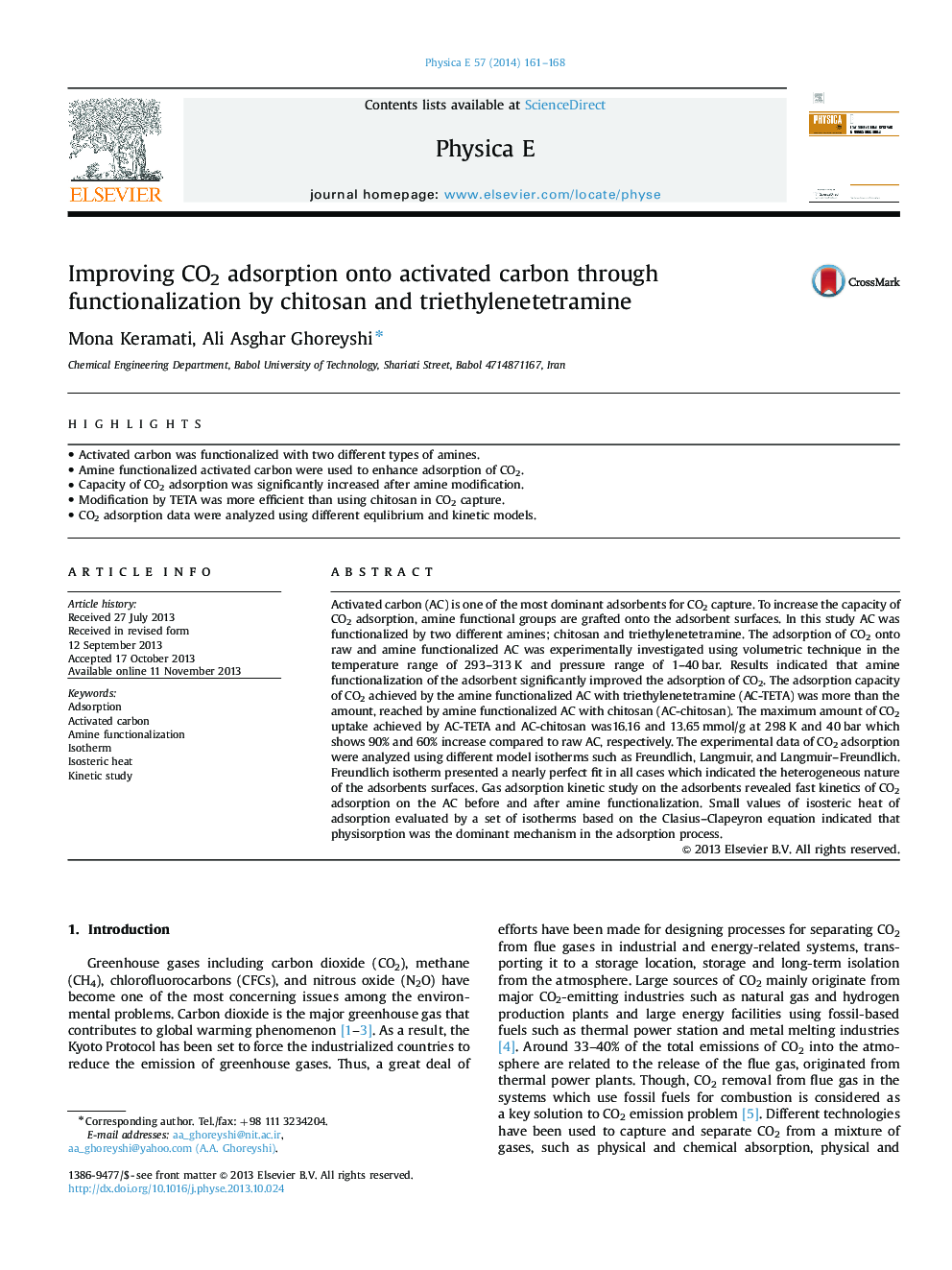| Article ID | Journal | Published Year | Pages | File Type |
|---|---|---|---|---|
| 7934571 | Physica E: Low-dimensional Systems and Nanostructures | 2014 | 8 Pages |
Abstract
Activated carbon (AC) is one of the most dominant adsorbents for CO2 capture. To increase the capacity of CO2 adsorption, amine functional groups are grafted onto the adsorbent surfaces. In this study AC was functionalized by two different amines; chitosan and triethylenetetramine. The adsorption of CO2 onto raw and amine functionalized AC was experimentally investigated using volumetric technique in the temperature range of 293-313Â K and pressure range of 1-40Â bar. Results indicated that amine functionalization of the adsorbent significantly improved the adsorption of CO2. The adsorption capacity of CO2 achieved by the amine functionalized AC with triethylenetetramine (AC-TETA) was more than the amount, reached by amine functionalized AC with chitosan (AC-chitosan). The maximum amount of CO2 uptake achieved by AC-TETA and AC-chitosan was16.16 and 13.65Â mmol/g at 298Â K and 40Â bar which shows 90% and 60% increase compared to raw AC, respectively. The experimental data of CO2 adsorption were analyzed using different model isotherms such as Freundlich, Langmuir, and Langmuir-Freundlich. Freundlich isotherm presented a nearly perfect fit in all cases which indicated the heterogeneous nature of the adsorbents surfaces. Gas adsorption kinetic study on the adsorbents revealed fast kinetics of CO2 adsorption on the AC before and after amine functionalization. Small values of isosteric heat of adsorption evaluated by a set of isotherms based on the Clasius-Clapeyron equation indicated that physisorption was the dominant mechanism in the adsorption process.
Related Topics
Physical Sciences and Engineering
Materials Science
Electronic, Optical and Magnetic Materials
Authors
Mona Keramati, Ali Asghar Ghoreyshi,
